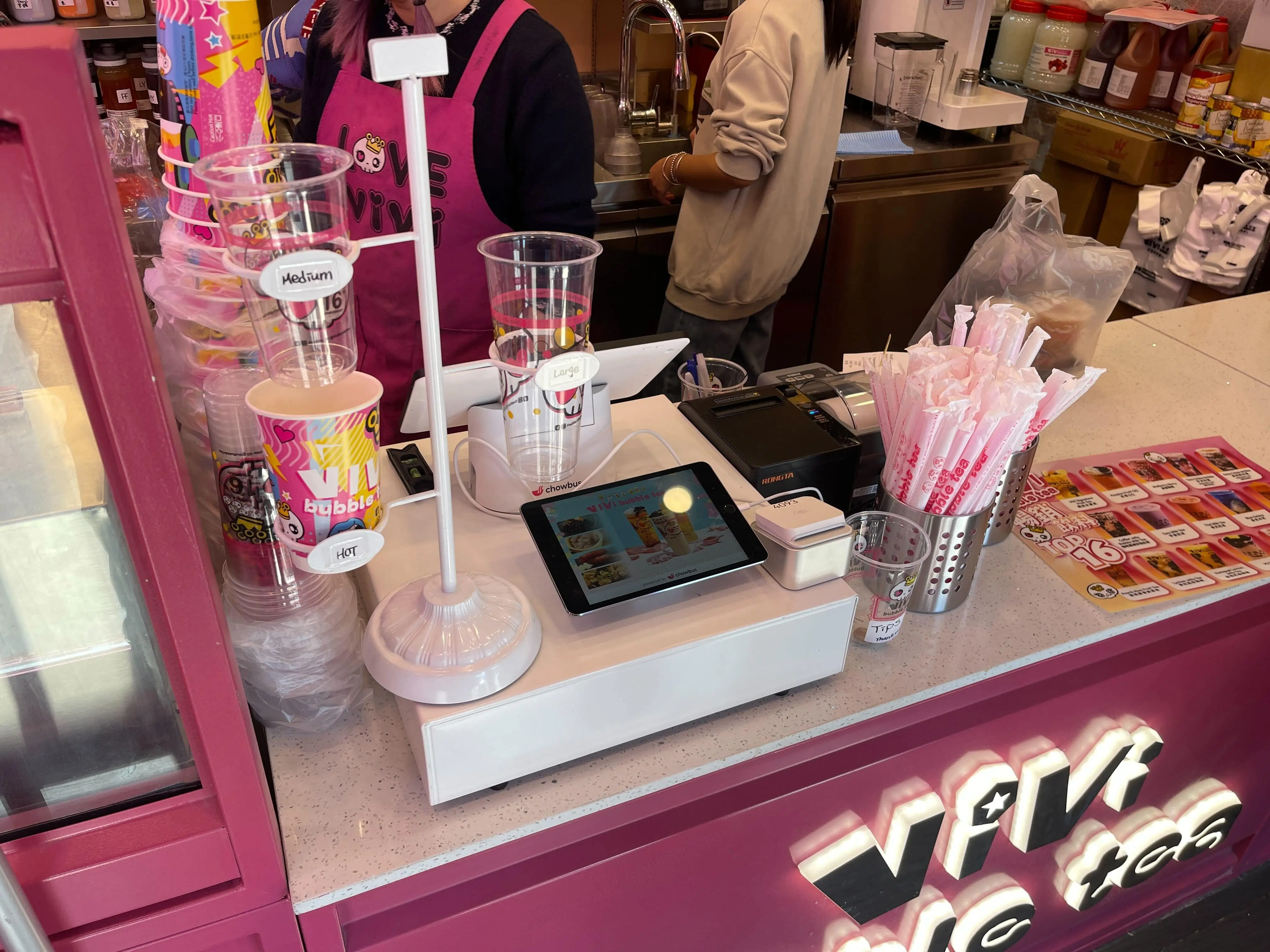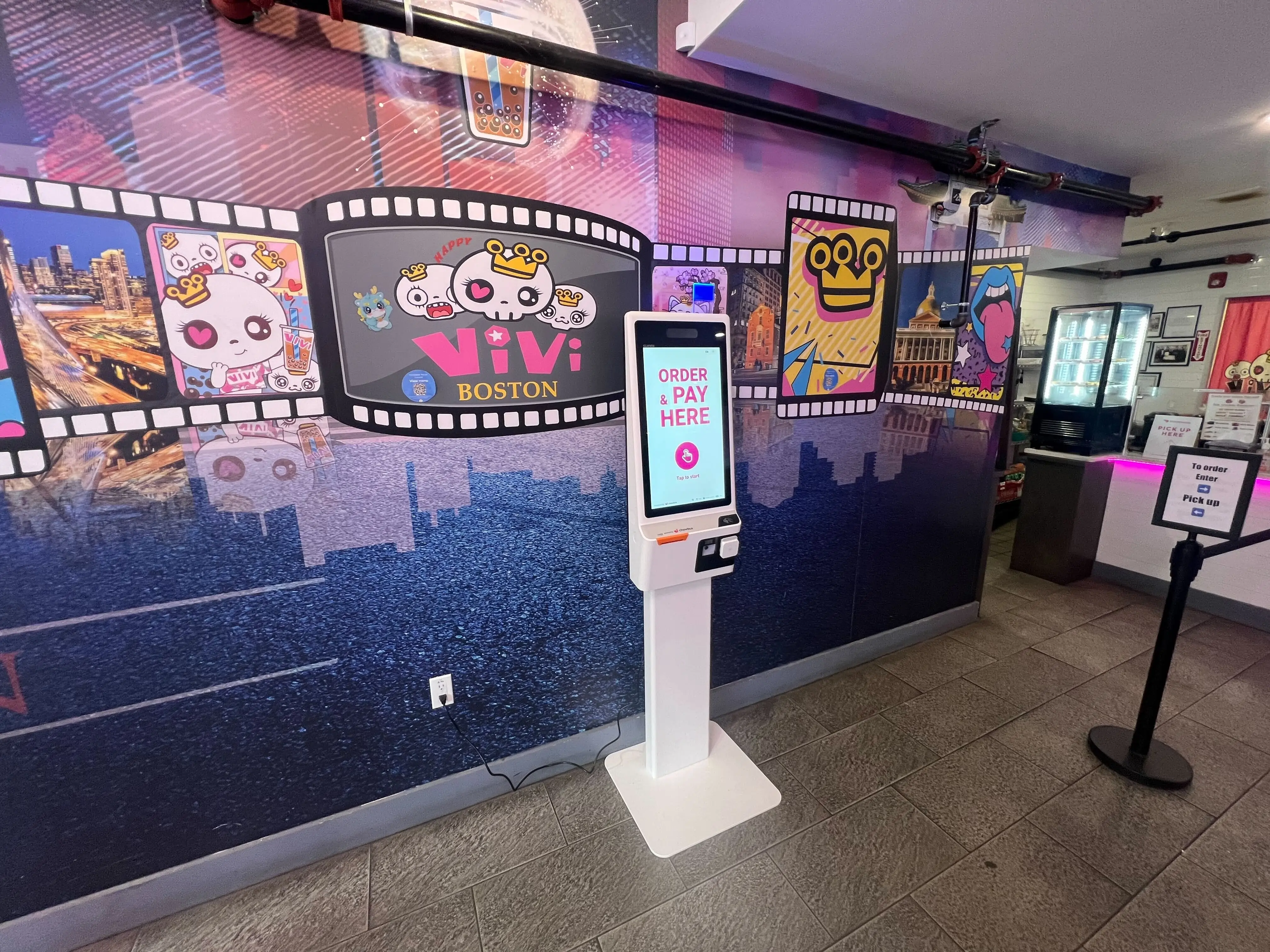
Opening a bubble tea shop sounds exciting, but before investing time and money, you need real numbers. How much do boba shop owners make each month? What does a typical boba shop owner's salary look like, especially in the early stages?
With startup costs, local competition, and customer demand all in play, knowing what to expect financially helps you plan smarter. This guide breaks down average earnings, key factors that affect income, and what you can do to increase profitability from the start.

On average, U.S. boba shop owners make between $40,000 and $150,000 per year. Profits can be higher in busy areas or once operations stabilize, while first-year owners often earn less as they build a customer base.
Daily sales typically range from 150 to 400 drinks, at an average price of $5–6. That translates to $22,500 to $72,000 in monthly revenue before expenses. After covering costs like rent, labor, and ingredients, many owners keep a healthy margin, though the exact number depends heavily on your market and setup.
Your actual income will vary, but the potential is strong if you can secure steady traffic and run operations efficiently.
Several key drivers shape your actual income. These include startup decisions, day-to-day operations, and how well you attract and retain customers. Here's what to focus on:
1. Location
High-foot-traffic spots usually cost more in rent but bring in more customers. A busy corner or plaza with lots of pedestrians often outperforms a cheaper location tucked away with limited visibility.
2. Startup Costs and Loans
If you opened with a lean budget, you may reach profitability faster. Owners who take on large loans or overinvest early may need longer to catch up.
3. Daily Sales Volume
Selling 150 to 400 drinks per day is a common target. Multiply that by your average ticket price, and you get a clearer view of revenue potential. The more efficient your team, the more customers you can serve each day.
4. Pricing and Add-ons
Offering customizations like cheese foam, boba toppings, or reusable cups can boost order size. Shops that keep their menu streamlined and pricing smart often see stronger margins.
5. Labor Strategy
If you manage the shop yourself or with minimal staff, your costs stay lower. On the other hand, full teams with rotating shifts cost more but allow you to stay open longer and serve more guests.
6. Marketing
Consistent promotions, digital ads, and a strong local presence help build loyal traffic. The more visible your shop, the faster your customer base grows.
Income isn't set in stone, but most owners who manage these elements with care end up on the higher end of the earnings range. Keeping a close eye on daily performance and making steady improvements tends to pay off.

A boba shop owner’s salary often gets confused with business profit, but they’re not the same.
Salary refers to what you pay yourself regularly from the business. Profit is what’s left after covering all expenses, including rent, labor, supplies, utilities, marketing, and loan payments. You can take a fixed salary and leave the rest as retained earnings, or take distributions based on monthly profit.
Your setup affects how much you can pay yourself:
In both setups, salary can grow as the business scales, but it should reflect realistic expectations tied to monthly profit. Managing expenses tightly in the first year helps protect your income while setting the shop up for growth.
Opening a boba shop takes more than a good location and a catchy name. The first year sets the foundation for long-term growth, but it's not when most owners see their biggest profits.
Breaking even usually takes 8 to 18 months, depending on location, operating costs, foot traffic, and how quickly you build a loyal customer base. If you're funding the shop through loans or savings, you'll likely spend the early months covering:
These expenses stack up quickly. Even if daily sales pick up early, much of that revenue goes right back into keeping the shop running. That’s normal.
Expect to reinvest a large portion of your profits during the first year. Most owners use that money to:
By month 6 or 7, income typically starts to stabilize, especially if your menu hits the right mix and your marketing brings in consistent traffic. It’s also the point where word-of-mouth begins to help.
Many successful owners report little to no take-home pay in the first few months, but by the end of year one, some begin earning between $3,000 and $8,000 per month in profit, depending on how they manage expenses and customer growth.
Think of year one as building the engine. Profits grow when that engine runs efficiently. Keep overhead tight, promote consistently, and track what works early on. That’s how you set yourself up for stronger second-year returns.

Profit doesn’t happen by chance. It comes from planning, efficiency, and smart decisions across daily operations. If you want to grow your income, focus on a few high-impact areas that can improve margins and customer retention.
Here’s how to boost your shop’s profitability:
1. Reduce Cost of Goods Sold (COGS)
Source ingredients in bulk when possible. Work with suppliers who offer competitive rates without sacrificing quality. Stick to a focused menu that limits waste and improves drink prep time.
2. Hire Smart and Train Well
Build a lean team that understands the flow of service. Clear expectations and good training lead to faster service, fewer mistakes, and better customer experiences.
3. Use a POS System Built for Boba Shops
A reliable POS helps track peak hours, top-selling items, and customer behavior. It also speeds up service, manages modifiers easily, and connects with loyalty tools. That efficiency adds up to more revenue per shift.
4. Set Up a Loyalty Program
Reward repeat visits. Even a simple stamp system or digital rewards program keeps customers coming back and increases order frequency.
5. Explore Franchising if You Want to Scale
Once your location runs smoothly and turns a solid profit, franchising may offer a way to expand with shared support and lower risk.
6. Get Expert Advice Early
A business consultant can help you plan pricing, streamline staffing, or assess site potential. Paying for insight upfront often prevents expensive mistakes later.
7. Buy Equipment Bundles When Possible
Equipment packages save time and money during setup. Look for bundled options from trusted vendors to reduce sourcing hassles and simplify installation.
Small adjustments in these areas can lead to stronger margins and more predictable income. Test, track, and adapt as you go.

So, how much do boba shop owners make?
Most make enough to replace a full-time income, and many scale beyond that. Profitability depends on daily drink volume, location, operations, and your approach to growth. If you're serious about launching a boba business, setting clear financial goals and choosing the right tools will give you a better chance at long-term success.
Looking to maximize efficiency from day one?
Chowbus POS offers the best POS system for bubble tea shops, designed to simplify orders, speed up transactions, and grow your revenue.
Book a Free Demo with Chowbus POS today and see how an all-in-one solution can support your bubble tea business.
Get quick answers to common questions about how much boba shop owners make. These insights can help clarify what to expect when running a profitable bubble tea business.
A successful boba shop owner typically makes between $5,000 and $10,000 in monthly personal income after all expenses.
However, this figure varies drastically. Key factors like location, foot traffic, operational efficiency, and local competition directly influence profits. A high-volume store in a prime area can far exceed this range, while a new or struggling shop might make significantly less as the owner reinvests earnings back into the business.
Remember, this is owner profit, not total revenue. The owner must first cover all costs, including inventory, rent, staff wages, and utilities, before taking home their share.
Yes, a well-run boba business can be highly profitable. Successful shop owners typically generate annual revenues ranging from $100,000 to over $500,000, with average profit margins between 15% and 30%. However, profitability isn't automatic. It hinges on three critical factors: a prime, high-traffic location, an efficient operations model that controls costs, and a strong brand that builds a loyal customer base. Ultimately, your earnings directly reflect your business acumen and the effectiveness of your daily management.
A successful boba shop typically sells between 200 and 500 cups a day. High-traffic locations or established brands often exceed 1,000+ daily sales. This volume directly influences a shop’s profitability, as the average cup price generates a significant profit margin after accounting for ingredients, labor, and overhead costs.
Yes, bubble tea can be a good business to start if you choose the right location, manage costs carefully, and build a loyal customer base. The industry continues to grow in the U.S., driven by strong demand from younger consumers. With relatively low startup costs compared to full-service restaurants and high profit margins per cup, bubble tea shops offer solid potential. Success depends on smart operations, consistent quality, and effective marketing.
Check out our blog section for more insights, tips, and updates to help you build and grow your boba tea business.

DISCLAIMER: The income figures and operational insights provided in this blog are based on industry estimates, case studies, and general market trends. Actual earnings for boba shop owners may vary depending on location, business model, costs, and management decisions. This content is for informational purposes only and should not be considered financial, legal, or business advice. Always consult with a qualified professional before making investment decisions.
Recommended Articles: